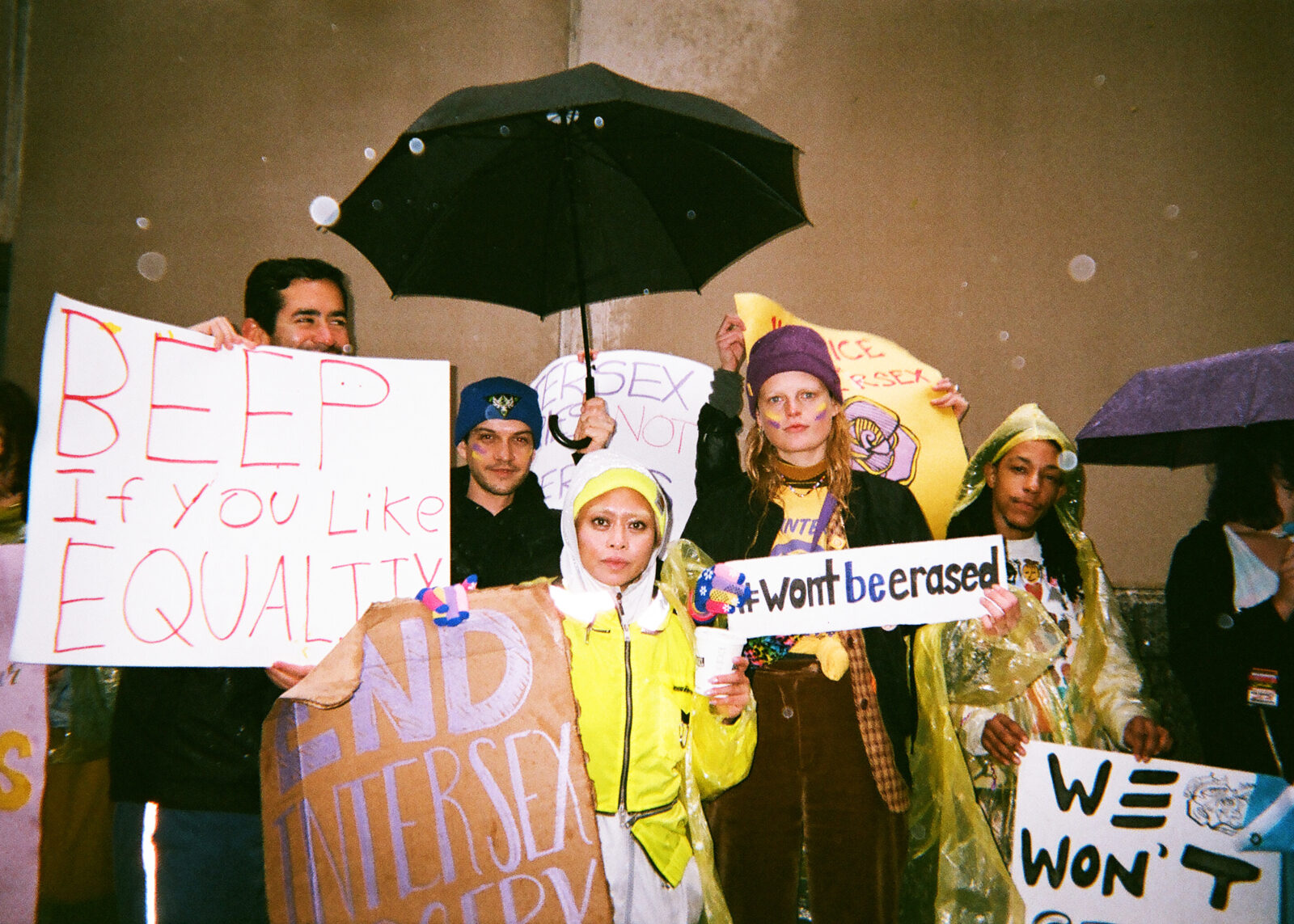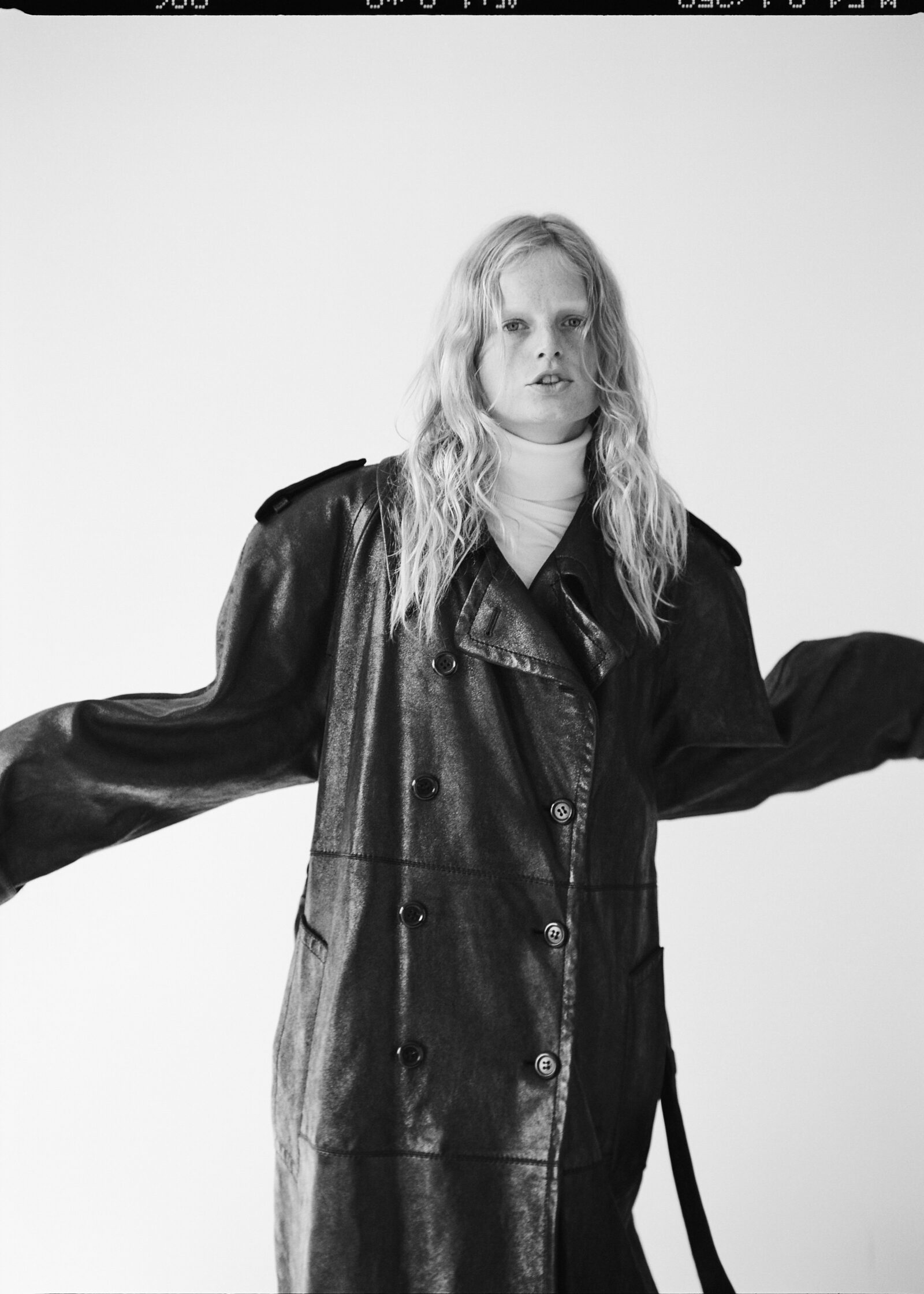
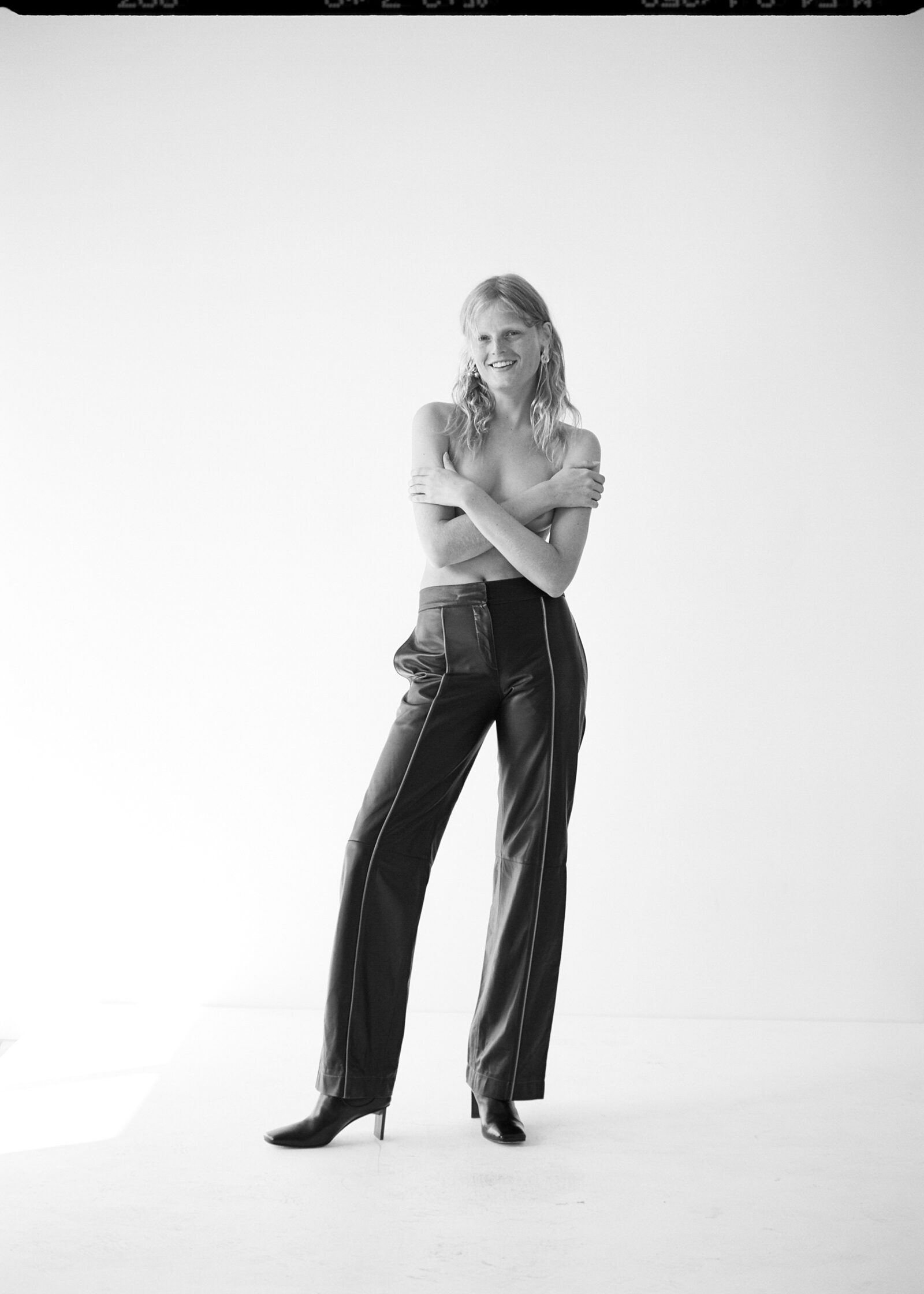


It’s been over a decade since Hanne Gaby Odiele was scouted by a model agent. At the time, they-Odiele primarly uses they/them pronouns but also accepts she/her-were just a fresh-faced, unassuming 17-year old in search of a good time at a rock music festival in their hometown of Kortrijk, Belgium.
A few weeks later, they were on a flight to New York preparing to make their fashion week debut. To say it went well would be an understatement; in that one season alone-SS06, to be exact-Odiele backed up prestigious runway appearances for Rodarte, Thakoon, and even Marc by Marc Jacobs.
“[Being scouted] really came out of the blue,” Odiele recalls, seeming bewildered by their rapid acceleration through the fashion industry’s hallowed ranks. “When I began, I didn’t know anything about the industry at all, but I loved the creative process of a shoot or a show. After a while it started to feel like one big dysfunctional, wacky family—like a circus on the go. I quite like that about it.”
With so much immediate success, it’s perhaps unsurprising that Odiele quickly fell in love with fashion. Was it difficult to be thrust into such a demanding profession at such a young age? “I think that everything happens for a reason“, they say. “I’m glad that it worked the way that it did. Although I am glad that I wasn’t any younger than I was.”
Although Odiele’s early experiences were largely positive, it’s worth underlining that the fashion industry has changed irreversibly as the influence of social media has risen. Models are now often cast according to their Instagram stats, and it’s no longer enough to be merely beautiful: brands expect their muses to be charismatic, engaging and able to communicate some sort of message. Odiele has always ticked these boxes —which may go some way towards explaining the unusual longevity of their career—but it wasn’t until last year that Odiele reached a new level of transparency with fans by officially coming out as intersex in a Vogue interview.
“It is very important to me in my life right now to break the taboo,” they later said in an interview with USA Today.
“At this point, in this day and age, it should be perfectly alright to talk about this: I am proud to be intersex.”
These quotes were quickly picked up by numerous fashion publications, many of whom reached out for interviews as well as more information about the charity—interACT, which advocates for the rights of intersex youth—that Odiele had chosen to partner up with. “The fashion industry really accepted it with open arms,” they say fondly. “There were many publications that supported my disclosure and gave me the space in their pages to share my story.”
Better still, fashion journalists committed to researching and writing about the problems that interACT and Odiele were collaboratively fighting to eradicate.
For the first time, platforms like Vogue, Teen Vogue, and Business of Fashion were writing comprehensive articles on intersex identities and advocating for greater visibility.
“Seeing the word ‘intersex’ printed on the cover of American Vogue last year was probably one of the biggest accomplishments of my career to date,” Odiele proudly tells us. “That, to me, was bigger than any editorial or campaign.
These quotes were quickly picked up by numerous fashion publications, many of whom reached out for interviews as well as more information about the charity—interACT, which advocates for the rights of intersex youth—that Odiele had chosen to partner up with.
“The fashion industry really accepted it with open arms,” they say fondly.
“There were many publications that supported my disclosure and gave me the space in their pages to share my story.
Better still, fashion journalists committed to researching and writing about the problems that interACT and Odiele were collaboratively fighting to eradicate. For the first time, platforms like Vogue, Teen Vogue, and Business of Fashion were writing comprehensive articles on intersex identities and advocating for greater visibility.
“Seeing the word ‘intersex’ printed on the cover of American Vogue last year was probably one of the biggest accomplishments of my career to date,” Odiele proudly tells us.
“That, to me, was bigger than any editorial or campaign.”
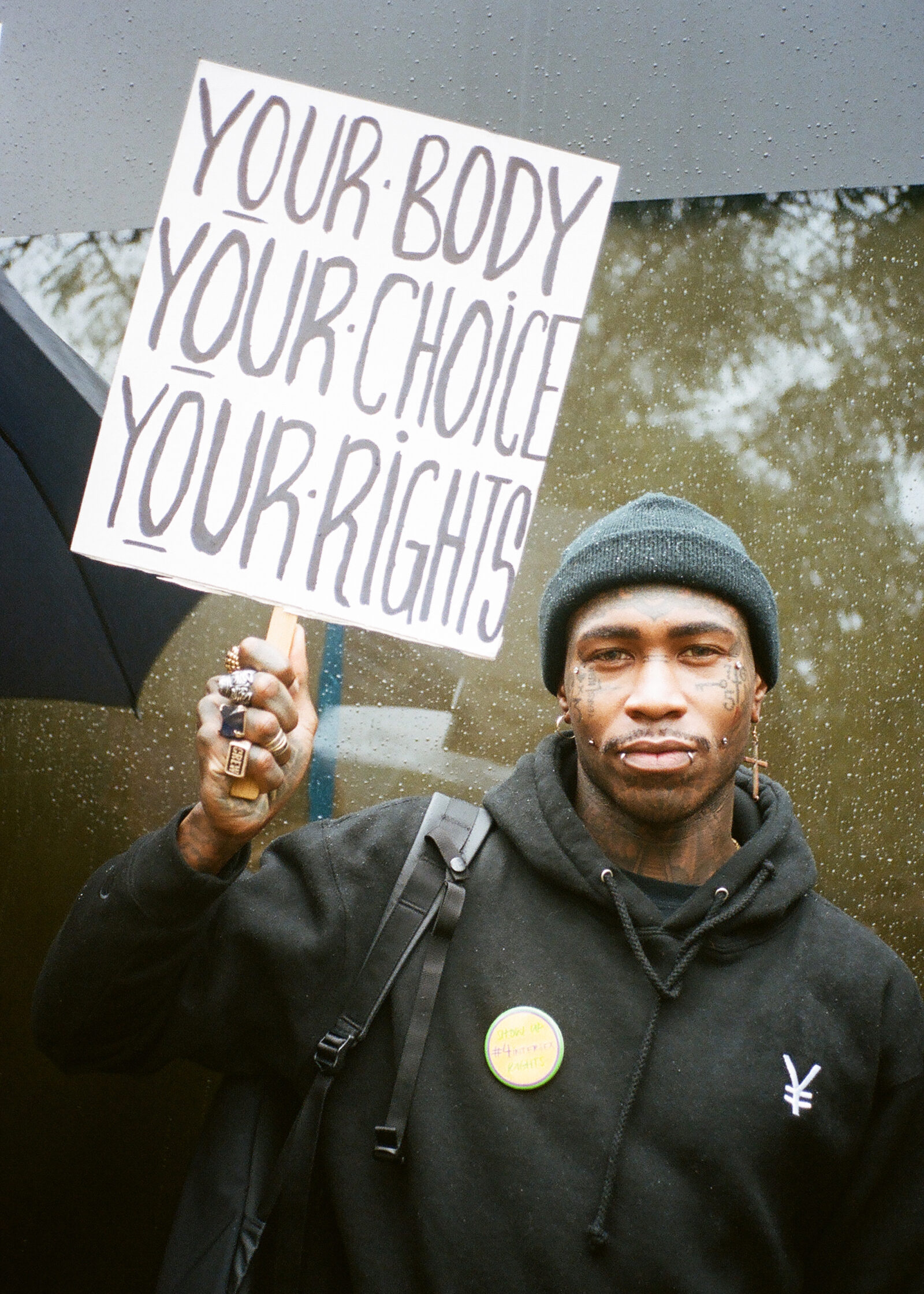
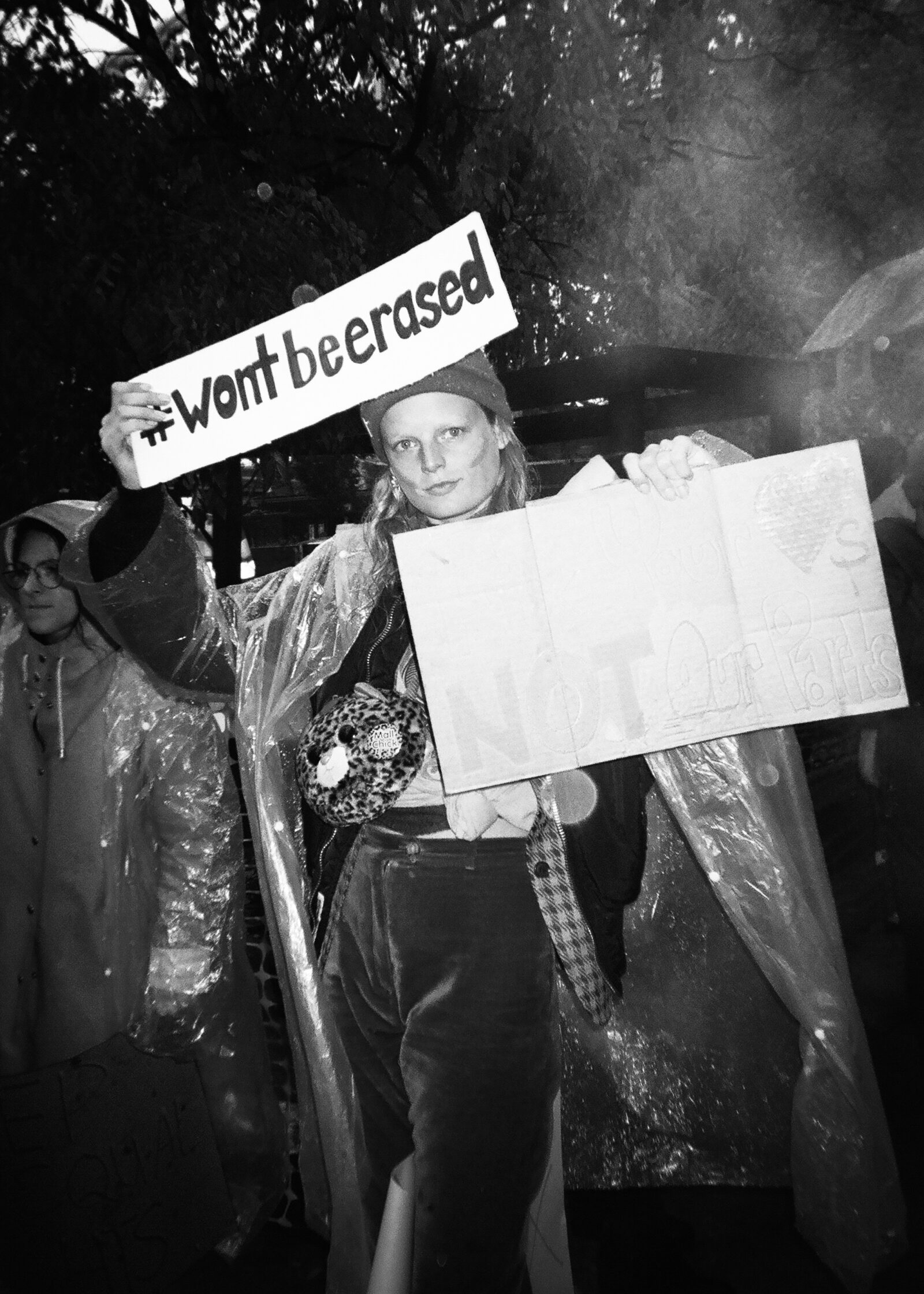
Although the last few years, in particular, have seen a spike in LGBT+ visibility, comparatively few column inches are dedicated to the intersex community. This is a crucial oversight, and not just because there’s a lot to write about—even the word ‘intersex’ is a vast umbrella term that can apply to anyone born with a variation in sex characteristics. In simple terms, these are people born with a biological makeup that deviates from the ‘male/female’ binary we’re often told is so definite and unshakeable. It isn’t. Much like gender, biological sex also exists on a spectrum. “Too often we like to gender things, even when it’s totally unnecessary to the story or situation,” explains Odiele. “When I started the process of my disclosure, I was unfamiliar with the terms ‘they/them’, and ‘non-binary’. [I now know] so many great folks [who use those] pronouns in my day-to-day life—it started to make so much more sense to me as an intersex person.”
Conversations like these are still rare in the fashion industry and in society more generally; our understanding of gender has accelerated so rapidly over the last few decades that it can sometimes feel difficult to keep up. But it’s important to make the effort because society’s narrow-minded views of gender are teaching parents that their intersex children are somehow ‘defective’, or in need of ‘corrective surgery. But these procedures aren’t just surgery. They’re a form of mutilation.
“We have to put a stop to the cosmetic surgeries being performed on intersex children who aren’t informed, or who aren’t able to make decisions about their bodies,” says Odiele, who has previously recounted their own experiences of intersex genital mutilation. Despite being condemned by the UN, the procedure has yet to be outlawed—a fact Odiele attributes to a lack of visibility. “I think that it’s time to be able to talk about it,” they say of their decision to become an advocate for intersex rights. “There is so much shame, stigma and medicalisation built around intersex, and that’s why genital mutilation is still happening. It’s time that we discuss this and the rights of intersex people more generally on a global scale.”
A recent law has been passed against such procedures in California, and Odiele hopes that this is just the beginning. But is fashion the best medium for these conversations? The industry isn’t exactly renowned for its promotion of diversity, although things are changing—statistics showed that this last season was New York Fashion Week’s most diverse ever.
“Besides the rampant nepotism in the industry—that has certainly been ballooning over the last couple of years—I do see a positive change in the representation of diversity of casting overall,”
They state, perhaps alluding to the countless designers happier to cast their friends than seek out new faces. Despite the industry’s well-documented issues, Odiele seems as passionate about fashion as ever. Our cover shoot is proof that few models can command a camera more effectively, and Odiele is also clearly excited about the pieces created by emerging designer Peter Do. “That was an exciting new discovery for me,” they tell us. The last few months have also seen them bring a sense of purpose and activism to everything they do. Now, Odiele seizes the opportunity to discuss the work but also shift the focus slightly, reminding their fans and the fashion industry more generally that are human rights violations that need to be eradicated. Odiele’s new campaign video for Margiela’s ‘Mutiny’ fragrance is a good example of this. In it, they address the audience directly, challenging the traditional conception of gender: “Gender, in general, is something that I think is bullshit. It’s made up to put people in a box … What is glamorous about fitting in?”Their visibility is also extremely important. The prevalence of intersex genital mutilation means that plenty of intersex people are robbed of key knowledge about themselves. Many experts estimate that intersex people are about as common as redheads, but plenty of infants are coercively ‘corrected’ without permission, and usually with at least some form of fear-mongering from medical professionals.
“Being intersex is a part of me for sure,” explains Odiele, “but it doesn’t define me. I’m not weird or defective because I’m intersex. What happened to me—the non-consensual surgeries, the stigma—is the problem, not my identity itself. Being intersex is actually a gift more times than not!”
This is a powerful message, especially as it relates to a community whose stories are so often seized from them by force. A quick Google search describes Odiele as the highest-profile intersex person in the world; while their identity should never detract from or overshadow their achievements, as role model, their importance in the fashion industry can’t be underestimated. Odiele clearly knows this and relishes the challenge of making a change for good.
